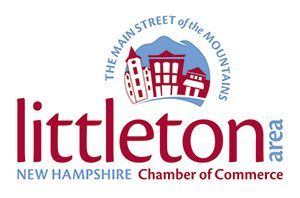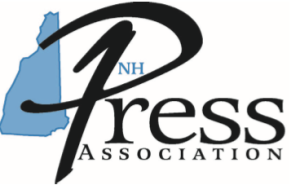
Their “Rescue-Ready, Resource Smart” program of backcountry rescue included Avalanche, Mountain Travel and Rescue, and Nordic Backcountry (AMN). It was an instructor refresher course conducted in the Pike Glades, a collection of northeast-facing glades accessible by ski touring, split-boarding, or snowshoeing in the Pike and East Haverhill areas.
The peak summits here are located above tree line at 2,200 feet, and the base area is situated at 700 feet. The Pike Glades is a proud partner of the Granite Backcountry Alliance and is thankful for their support and facilitation of the glade-building process. Warren Bunnel is the Glade Chief.
The AMN initials stand for “Avalanche, Mountaineering, and Nordic Back Country. These are three specialized educational disciplines that the 87-year-old National Ski Patrol organization has always taught. However, each of these educational curricula is a fraction of the size of the nationwide emergency medical technicians training and the on-snow rescue toboggan handling education.
Every member of the National Ski Patrol undergoes training in those two central educational departments, but AMN has always been optional. It is the education ski patrollers seek that allows them to be qualified to exit the boundary of a ski resort and conduct rescues deeper into the wilderness.
Saturday’s schedule began with a continental breakfast at 7:00 AM followed by the conference's official start at 8:00 AM. It was an all-outdoor education, and the groups broke into three sections. And by 9 AM, they were walking up into old cattle pastures at the bottom of the Glades to practice skills in the three educational disciplines that they were practicing—those included (1) technical rope rescue for search and rescue personnel and mountaineers. (2) avalanche beacon search and extreme hypothermia medical rescue, and (3) smartphone GPS navigation augmented by a paper map and compass.
Sunday included more training as the instructors developed coaching skills to teach students these essential survival techniques effectively. It was also a time to hike to the top of Iron Mountain to enjoy the views and the extensive glades work done over the past two years.
Orest Ohar of the New Hampshire Backcountry Ski Patrol, which is affiliated with the Granite Backcountry Alliance, told The Bridge Weekly at the conclusion of the weekend’s activities at The Pike Glades that “the program went extremely well.” He said that a total of 76 people, of which 62 were students, broke up into three different stations and rotated through three evolutions for the subjects of Avalanche, Mountaineering, and Nordic Backcountry drill clinics.
He said the avalanche team conducted a beacon search and an extreme hypothermia first aid course, the mountaineering team performed a technical low-angle rope rescue, and the Nordic Backcountry group practiced compass and map navigation using a new electronic navigation system. There was a larger turnout than usual for classes.
Ohar said that “We are teaching our instructors to be less PowerPoint-oriented and more coaching-oriented in the field.” He said it was their first training session, where instructors walked away from the ski lodge or classroom with PowerPoint presentations and sent the students directly into the mountains to do all the fieldwork.
Mr. Ohar is one of five founders of the "New Hampshire Backcountry Ski Patrol" (NHBSP), which operates exclusively for the Granite Backcountry Alliance (GBA).
“We are two separate organizations. GBA's mission is to develop and maintain human-powered winter recreation ski glades, ensuring they remain accessible to the public. NHBSP is a "medical backcountry rescue unit" managed by GBA, set up to improve the safety of its members and the public attending GBA events. We serve year-round, including during community glade cut events during autumn months, as well as in the winter when GBA takes to the slopes on skis and snowboards during fundraisers, races, and ski festivals,” ski patroller Ohar said.
GBA has an ethics education program known as Ski Kind, which is augmented by safety education programs that promote safety, self-reliance, and wilderness rescue. Both organizations serve GBA members and the public backcountry skiing community.
He explained the situation: “The difference between ski resort Patrollers and Backcountry Patrollers is that our rescues are often far from roads and access to the EMS system. The Backcountry Patroller's job is to locate, extricate, and evacuate patients injured deep in the wilderness and bring them out to local EMS waiting at the roadside. At a ski area, a rescue takes approximately 20 minutes. In the backcountry, rescuers must be prepared to work overnight to rescue their patients,” Mr. Ohar said.
Orest Ohar is a 37-year veteran of the National Ski Patrol. He has worked most of those years at Ski Resorts and as a leader at the Eastern Division of the National Ski Patrol. He has pioneered online education technology and educational courses, with a specialization in professional instructor development. Mr. Ohar sits on three committees for the Eastern Division NSP:
1. Eastern Division NSP's "Computer Technology Support Group" directs the online learning management system.
2. Eastern Division NSP's "Outdoor Emergency Transportation Steering Committee", where he oversees Instructor Professional Development
3. Eastern Division's AMN Curriculum Committee, where he oversees Instructor Professional Development
Most of his work for Ski Patrol revolves around training instructors, managing certification examinations, and organizing professional development conferences.
For New Hampshire Backcountry Ski Patrol, as one of two currently active founders, Mr. Ohar guides the patrollers and their leadership in maintaining the high standards required for wilderness backcountry "readiness."
Two years ago, Pike Glades Chief Warren Bunnell introduced Ohar to this area because he thought it would be good for the patrol to do training events there at the glades. It has proven to be very attractive to the training program.
The weekend session drew attendees from Rochester and central New York, Philadelphia, New Jersey, Eastern New York, Vermont, Massachusetts, and several from New Hampshire.
The National Ski Patrol has 32,000 members nationwide and also maintains an international division that is affiliated with military bases and ski resorts owned by the military in Europe. Almost all of the 32,000 members are assigned to the large and small ski resorts throughout the nation.
Another outstanding participant in this group operating at Pike Glades is Rick Shandler. He is the chairperson of the AMN Curriculum Committee. The committee manages professional development curricula for the AMN Instructor Corps, which are distributed throughout the Eastern Division of the National Ski Patrol. This committee designed the Instructor's Conference that was recently held. The instructors teach at their local patrols, resorts, and often at their local regional level.
Rick is a member of the Valley Forge Nordic Ski Patrol, which works for the National Park Service on the winter grounds of Valley Forge. He lives in Havertown, Pennsylvania, outside of Philadelphia. He is also the Safety Officer for most Division Nordic Courses, such as the one run by Orest Ohar at Pike Glades every February.
Rick said, “The Pike Glades just might be my favorite location ever during the 20-plus years I have been running this program,” he said at the end of Saturday’s intense schedule. “The staff and owners here have been more friendly, more accommodating, and more willing to work with us than anywhere I have ever run this program,” Rick said about his experiences in Pike.
He reported that his organization is very aligned with the mission they run at Pike Glades. “We all do the same kind of good work, and they recognize this.”
Have a story?
Let's hear it!
(802) 757-2773
(603) 787-2444
news@thebridgeweekly.com




